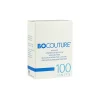Dermal Fillers: The Good, The Bad, And The Dangerous
TEXT SOURCE: HARVARD HEALTH BLOG
The four major structural components of our face are skin, fat, muscle, and bone. As we age, volume loss in these structures contributes to many of the visible signs of aging. Dermal fillers may help.
Over time, age-related bone loss in the face can lead to retraction of the jawline, descent of the nose, and loss of high cheekbones. The facial muscles also decrease in volume and elasticity, and deflation and movement of facial fat further accentuates the signs of aging. Finally, the skin stretches and loses elasticity — compounded by the loss of scaffolding provided by fat, muscle, and bone, this leads to wrinkles, sagging skin, and other familiar signs of aging.
Dermal fillers, an injectable treatment performed in a doctor’s office, can help smooth lines and replenish lost volume, restoring a more youthful appearance.
What are dermal fillers?
Dermal fillers are soft, gel-like substances that are injected under the skin. They can address a number of common concerns including smoothing of deep under-eye circles, lifting of cheekbones, volumization of the lips, smoothing of lip lines and nasolabilal folds (the creases that run from the side of the nose to the corners of the mouth), and rejuvenation of the hands.
Dermal fillers can be composed of a variety of substances, some naturally occurring and some synthetic. One of the most common compounds used in dermal fillers is hyaluronic acid (HA). HA is a naturally occurring substance found in our skin, and it plays a major role in keeping skin hydrated and volumized. HA fillers, depending on their specific chemical makeup, can last from six months to much longer before being gradually absorbed by the body.
One of the main benefits of HA fillers, aside from their natural appearance when injected, is that they can be dissolved by a special solution in case of an adverse event, or if the person dislikes the appearance. Also, most HA fillers are premixed with lidocaine, a numbing agent, to maximize comfort during treatment.
Other available dermal fillers include those made from calcium hydroxylapatite, poly-L-lactic acid, polymethyl methacrylate, and autologous fat (fat that is transplanted from another part of your body). Calcium hydroxylapatite is a mineral-like compound naturally found in human bones. It has been used in dentistry and reconstructive plastic surgery for years with a long track record of safety. Poly-L-lactic acid is a synthetic filler that helps to stimulate collagen production. This filler is different from other fillers because its results are gradual; volumization occurs over several months as it stimulates the body to produce collagen. Polymethyl methacrylate is a semi-permanent filler. While it is more durable compared to other more readily biodegradable fillers, it has potential complications such as forming lumps or being visible under the skin.
Each of these substances has its own pros and cons, as well as a unique density, longevity, and texture, which means a particular material may be more or less suited to a specific area of the face or desired result. Choosing the right type of dermal filler requires the guidance of an experienced, board-certified dermatologist or cosmetic surgeon with a thorough understanding of facial anatomy, and familiarity with the variety of available fillers and their respective injection techniques. A medical professional will thoroughly evaluate any specific areas of concern, understand what you hope to get out of the procedure, and review what to expect before, during, and after the treatment to ensure the best cosmetic outcome.
Avoid black market dermal fillers
Dermal filler procedures can be expensive, which has prompted some consumers to turn to the online black market to purchase do-it-yourself fillers. In the last month, there have been multiple reports in media outlets and in the medical literature of dangerous complications resulting from self-injection of fillers by non-health professionals.
One risk is that fillers purchased online can contain a variety of nonsterile substances, such as hair gel. When injected, these substances can cause allergic reactions, infections, and the death of skin cells. Another risk is that improper injection technique can lead not only to swelling and lumpiness, but also more serious side effects such as death of skin cells, and embolism leading to blindness. The FDA has issued an official warning urging consumers to “never buy dermal fillers on the internet. They may be fake, contaminated, or harmful.”
Dermal fillers are safe and effective in the right hands
So where does this leave the savvy consumer interested in noninvasive treatments to reduce the signs of aging? Finding the right physician to perform your dermal filler procedure is key. Don’t be afraid to ask about training and certification to ensure you’re receiving care from a board-certified, experienced dermatologist or cosmetic surgeon.
With the right preparation and communication between you and your physician, you can achieve natural, beautiful, and safe results.
Follow author on Twitter @KristinaLiuMD






